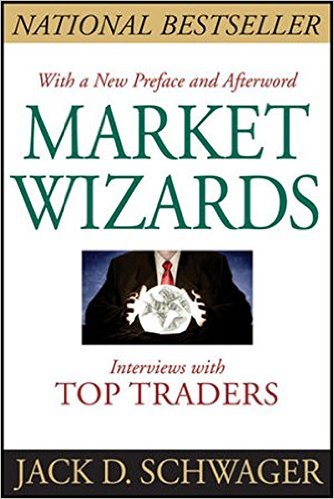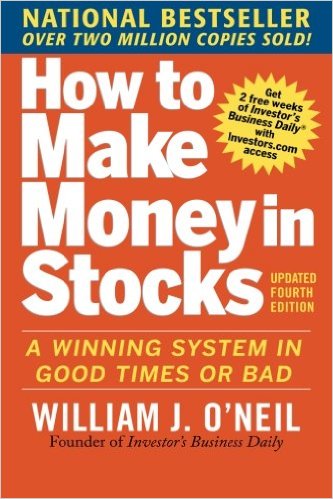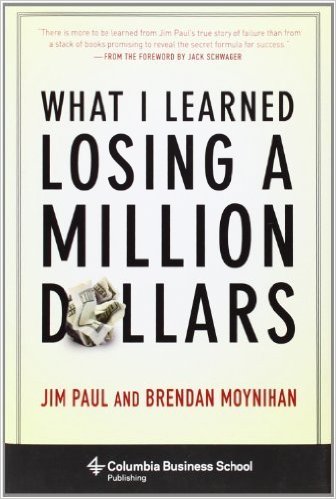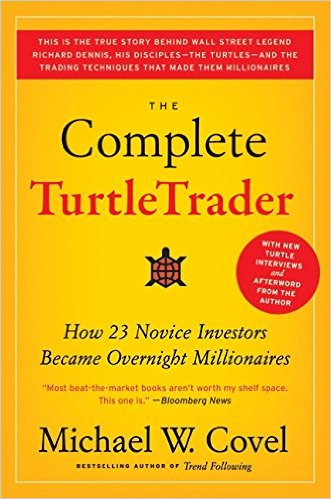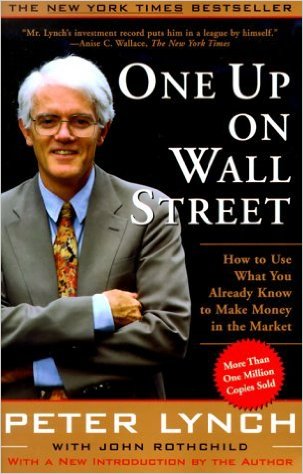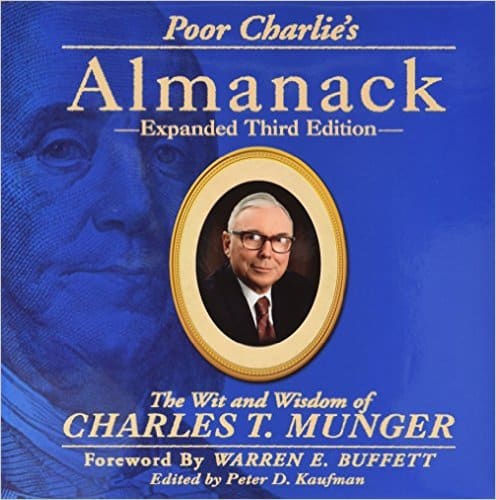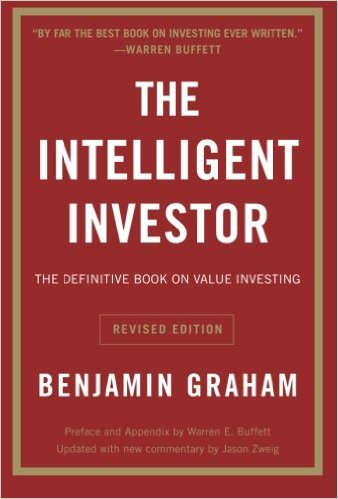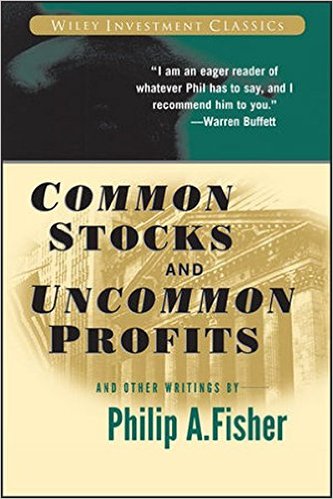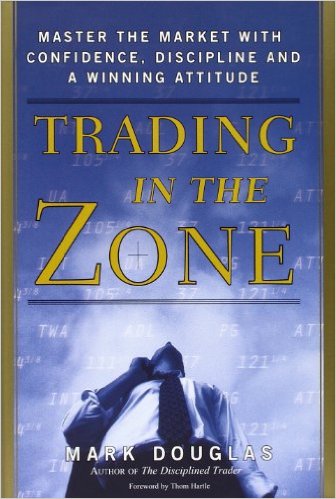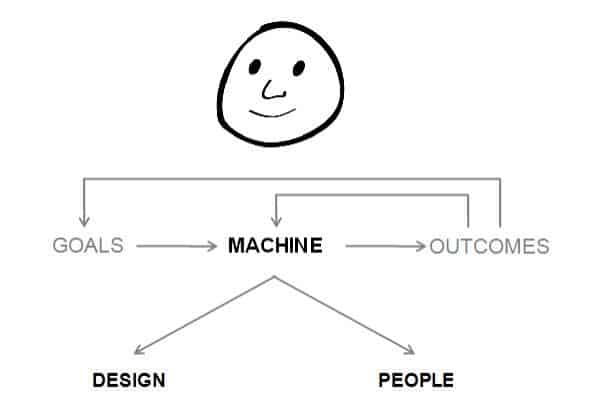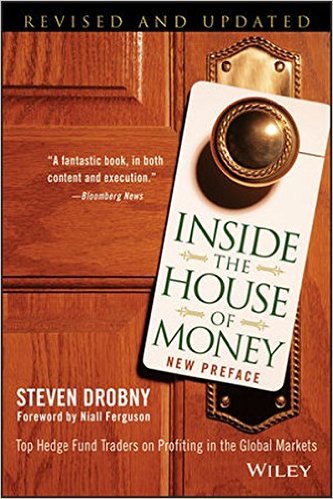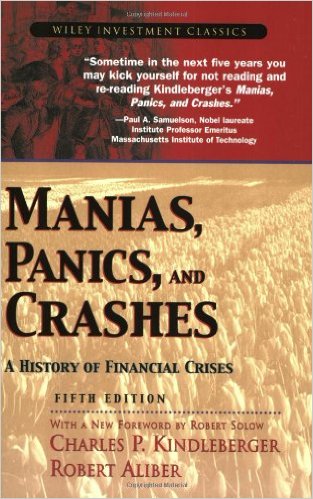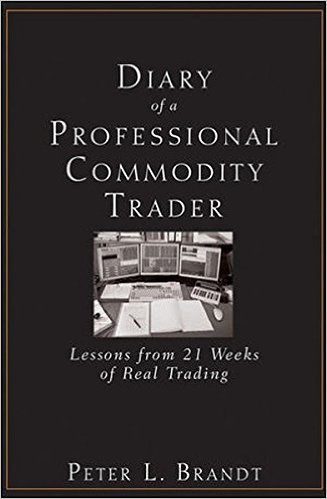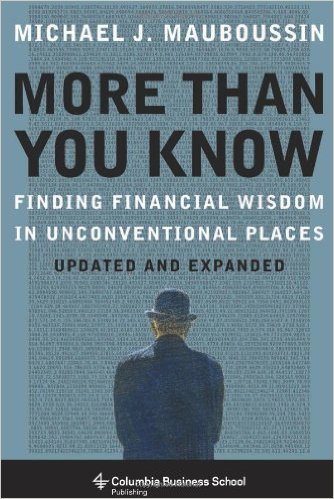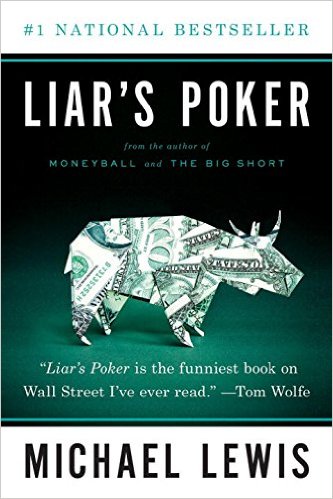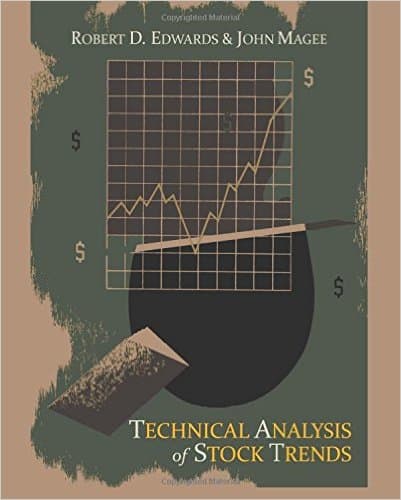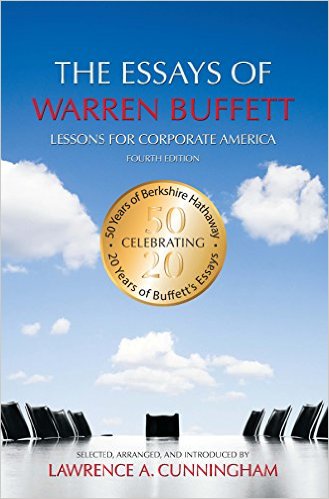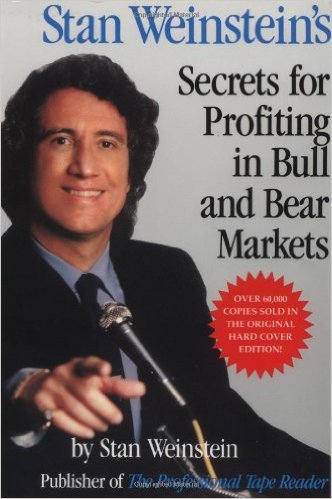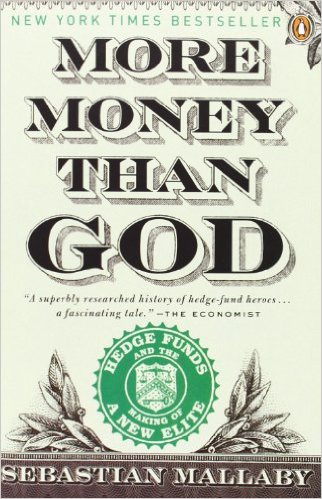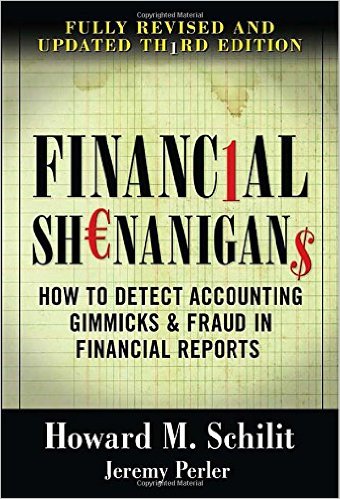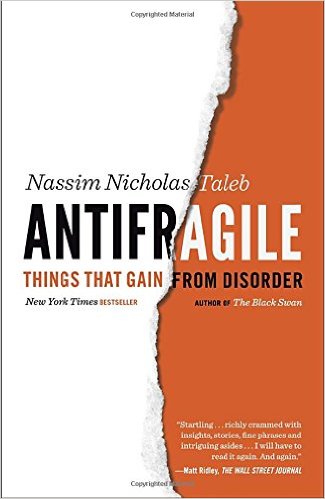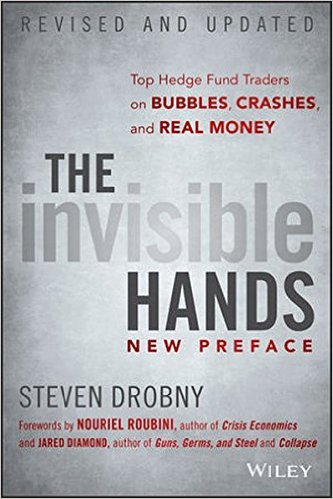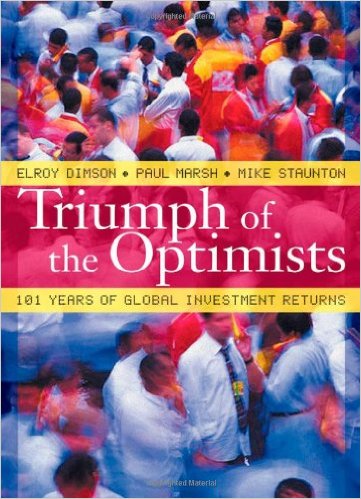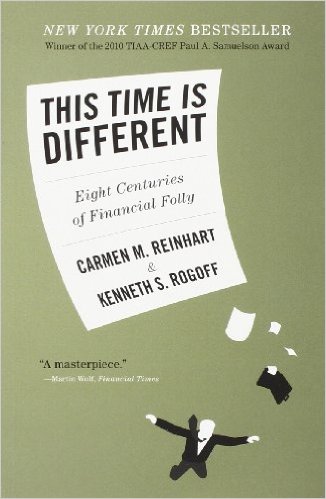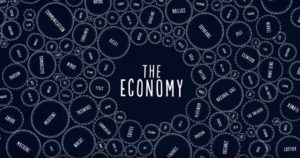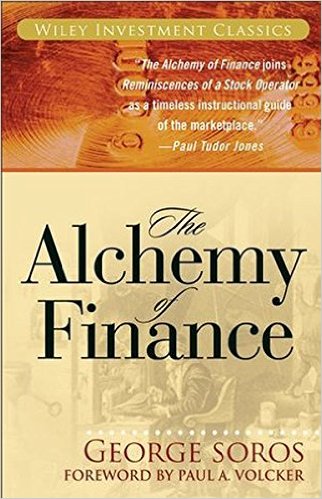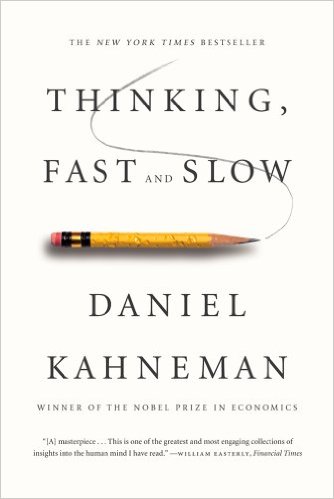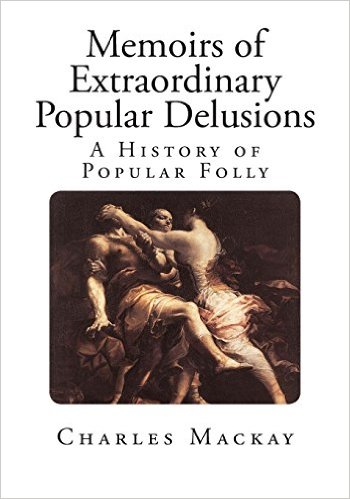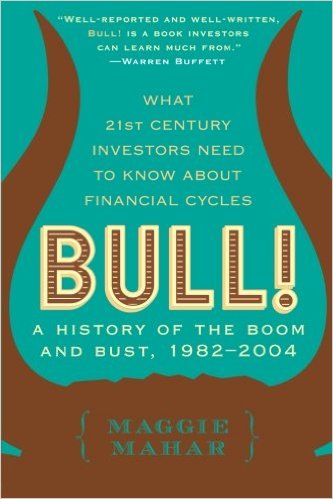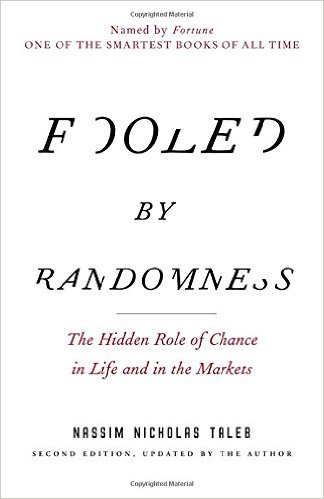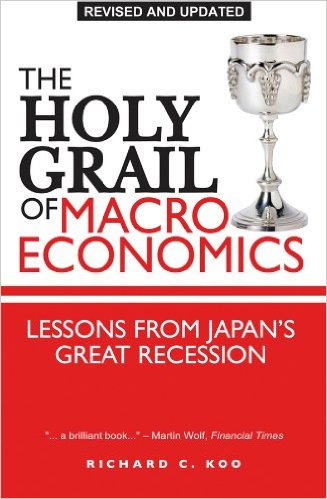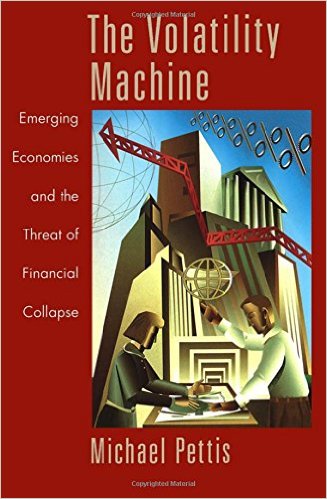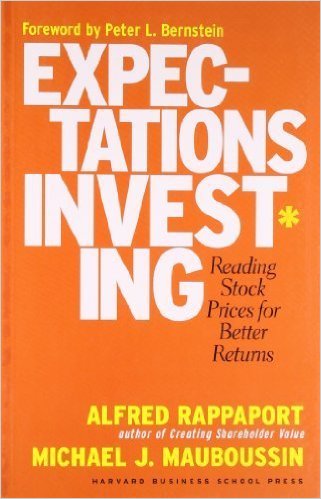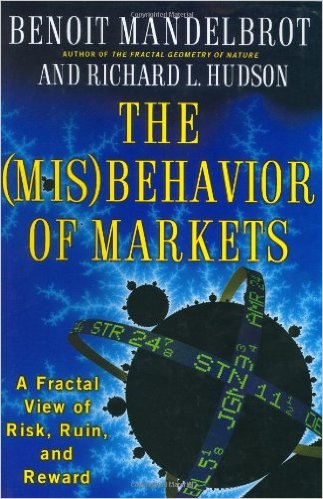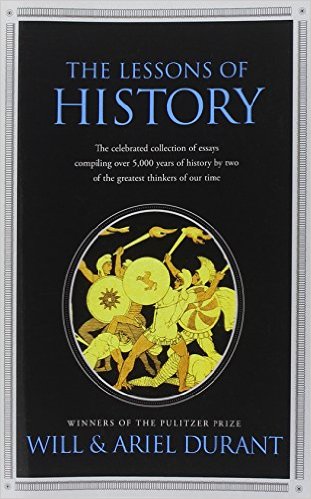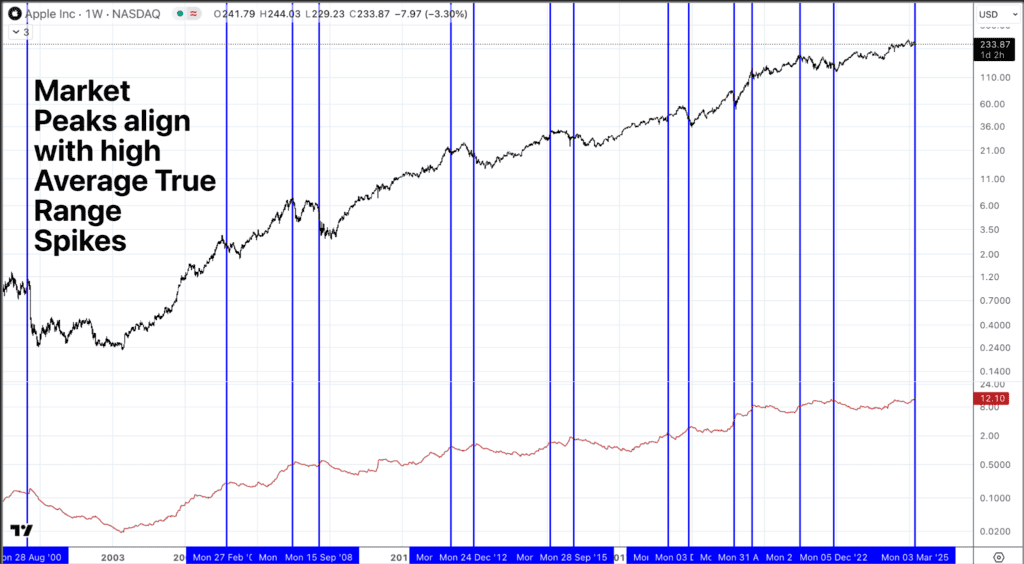The successful macro investor must be some magical mixture of an acute analyst, an investment scholar, a listener, a historian, a river boat gambler, and be a voraciousreader. Reading is crucial.
~ Barton Biggs
After being asked countless times about the best books to read when it comes to markets and trading, I finally decided to create a comprehensive list of the best resources to fully grasp global macro trading.
I’ve read hundreds of books on trading, markets, economics, history and psychology over the years. And even now I still try to read a new one every two weeks. Reading is not only vital to developing yourself as a trader, but also as a person who’s able to get what they want out of life.
Charlie Munger put it well when he said:
I have said that in my whole life, I have known no wise person, over a broad subject matter who didn’t read all the time — none, zero. Now I know all kinds of shrewd people who by staying within a narrow area do very well without reading. But investment is a broad area. So if you think you’re going to be good at it and not read all the time you have a different idea than I do.
You’re going to notice that the following list is not just trading books, but also books on psychology and history. You need a firm understanding of both in order to effectively apply what you’ve learned to the markets.
One of the reasons why I love trading, and global macro trading in particular, is because of the broad disciplines you need to study to be successful. The goal is to become a polymath, a renaissance man of sorts, who can pool together disparate points and fields of study to form an advantageous understanding of how this complex world works.
This reading list is broken down into three sections: Beginner, Intermediate, and Advanced.
I’ve constructed it along the lines of what I’d recommend to someone just starting out in the game. The books progress in their level of advancement as you move further down the list. It’s the reading list that I would follow if I were starting out today.
I’m inevitably forgetting to add some excellent books to this list. If you find any glaring omissions, please add them to the comments section below and I’ll throw them on here. This list is a living document that I’ll continue to add to and update overtime.
Global Macro Trading Books For Beginners
Edwin Lefevre’s “Reminiscences of a Stock Operator”
The best book ever written on trading and markets. It details the life and trading of Jesse Livermore — one of the greatest to ever play the game. This is the first trading book you need to read and it’s one you should revisit every couple of years. I’ve gone through it countless times. I learn something new each time I open it.
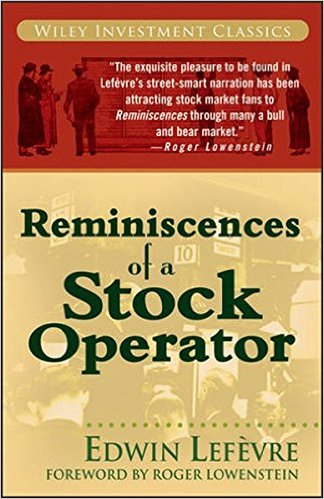
“After spending many years in Wall Street and after making and losing millions of dollars I want to tell you this: It never was my thinking that made the big money for me. It was always my sitting tight. Got that? My Sitting tight!”
Josh Waitzkin’s “The Art of Learning”
One of my all-time favorite books on the art of learning and mastering a skill. Fans of Tim Ferriss should be familiar with Josh as he’s appeared on his podcast numerous times. Josh is the child chess prodigy that the movie Searching For Bobby Fischer is based off of. The guy knows a thing or two about operating at an elite level. He also consults with a number of big name hedge fund managers. You can read our in-depth review of his book here.
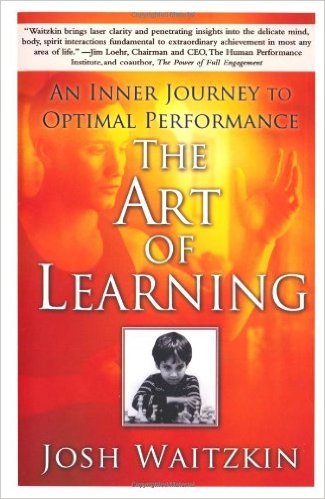
“If I want to be the best, I have to take risks others would avoid, always optimizing the learning potential of the moment and turning adversity to my advantage. That said, there are times when the body needs to heal, but those are ripe opportunities to deepen the mental, technical, internal side of my game. When aiming for the top, your path requires an engaged, searching mind. You have to make obstacles spur you to creative new angles in the learning process. Let setbacks deepen your resolve. You should always come off an injury or a loss better than when you went down.”
Jack Schwager’s Market Wizard Series
There’s four books in this series and each is filled with timeless trading wisdom. The original Market Wizards was the first trading book I ever read and it changed the direction of my life.
“There is no single market secret to discover, no single correct way to trade the markets. Those seeking the one true answer to the markets haven’t even gotten as far as asking the right question, let alone getting the right answer.”
William O’Neil’s “How To Make Money In Stocks”
A simple and effective system to help a trader discover growth stocks. Though the “CANSLIM” system itself has become somewhat cannibalized because of its popularity, the book itself remains a valuable lesson in how to look at markets.
“The whole secret to winning big in the stock market is not to be right all the time, but to lose the least amount possible when you’re wrong.”
Learn more about William O’Neil here.
Jim Paul’s “What I Learned Losing A Million Dollars”
A must-read on risk and investing psychology. An underrated book that will help you learn from the mistakes of others so you don’t have to make them as well. I listened to this one on audiobook but hope to read it in the future.
“Speculating is the application of intellectual examination and systematic analysis to the problem of the uncertain future.”
Howard Marks’ “The Most Important Thing”
Timeless investing wisdom from one of the greatest operators in the game. I’m a big fan of Marks. He imparts a lot of important market lessons in this book. It’s also worth taking some time and reading his quarterly letters that are up on his fund’s site.
“Several things go together for those who view the world as an uncertain place: healthy respect for risk; awareness that we don’t know what the future holds; an understanding that the best we can do is view the future as a probability distribution and invest accordingly; insistence on defensive investing; and emphasis on avoiding pitfalls. To me that is what thoughtful investing is all about.”
Victor Sperandeo’s “Trader Vic – Methods of a Wall Street Master”
A comprehensive and engaging read on everything from trading systems to psychology and even a little macro. A good overview of the basics of trading.
“If there is one fatal flaw in this business, it is allowing isolated information to drive trading or investing decisions-committing money without understanding all the risks. And there is only one way to understand all the risks: through systematic knowledge.”
Adam Smith’s “The Money Game”
An entertaining and quick read on trading, markets and money management that is filled with trading wisdom. I really enjoyed this book and I’m a big fan of “Adam Smith’s” writing. Smith (which is his pen name) also did a really great finance show called “Money World” that ran back in the 90’s. You can catch old episodes of it on Youtube. You can also read our in-depth review of his book here.
“The market,’ says Mister Johnson, ‘is like a beautiful woman — endlessly fascinating, endlessly complex, always changing, always mystifying. I have been absorbed and immersed since 1924 and I know this is no science. It is an art. Now we have computers and all sorts of statistics, but the market is still the same and understanding the market is still no easier. It is personal intuition, sensing the patterns of behavior. There is always something unknown, undiscerned.”
Jack Schwager’s “Market Sense and Nonsense”
Schwager does an excellent job tearing down common investing fallacies and shining a light on how markets really work.
“In essence, leverage comparisons should be made only between equivalent portfolios. A corollary is that asking for the average leverage of the underlying assets in a diversified fund of funds portfolio makes no sense. How can you average leverage across completely different investments? “
Michael Covel’s “The Complete Turtle Trader”
The legendary story behind Richard Dennis and his turtle experiment. Good primer on systems trading and risk management. Also just an easy and fun read.
“How much of a role does luck play in trading? In the long run, zero. Absolutely zero. I don’t think anybody winds up make money in this business because they started out lucky.”
Learn more about Richard Dennis and his strategy here.
Peter Lynch’s “One Up On Wall Street”
A simple overview of the qualitative and quantitative factors that went into Lynch’s stock picking. Easy read and a good review of some pretty common sense investing wisdoms.
“The trick is not to learn to trust your gut feelings, but rather to discipline yourself to ignore them. Stand by your stocks as long as the fundamental story of the company hasn’t changed.”
Charlie Munger’s “Poor Charlie’s Almanack: The Wit and Wisdom of Charles T. Munger”
An encyclopedia of valuable mental models from the wiser of the Buffett-Munger duo.
“Acquire worldly wisdom and adjust your behavior accordingly. If your new behavior gives you a little temporary unpopularity with your peer group…then to hell with them.”
Benjamin Graham’s “The Intelligent Investor”
A classic on value investing and also a better overview of the strategy than Graham’s first book, Security Analysis.
“The market is a pendulum that forever swings between unsustainable optimism (which makes stocks too expensive) and unjustified pessimism (which makes them too cheap). The Intelligent Investor is a realist who sells to optimists and buys from pessimists.”
Philip Fisher’s “Common Stocks and Uncommon Profits and Other Writings”
Fisher is the man that Buffett sought out for investing wisdom after reading this book. He’s also known as the “Father of Growth Stock Investing”. In this book, he covers his 15 point method for analysing whether a company is worth investing in or not. The book is an easy and frank discussion on how to fundamentally assess stocks.
“Such a study indicates that the greatest investment reward comes to those who by good luck or good sense find the occasional company that over the years can grow in sales and profits far more than industry as a whole. It further shows that when we believe we have found such a company we had better stick with it for a long period of time. It gives us a strong hint that such companies need not necessarily be young and small. Instead, regardless of size, what really counts is a management having both a determination to attain further important growth and an ability to bring its plans to completion.”
Marty Schwartz’s “Pitbull: Lessons from Wall Street’s Champion Day Trader”
Admittedly, I’m partial to this book because Marty is a fellow Marine. But he also happens to be one of the best futures traders ever. It’s also a highly-entertaining read and a good example of how hard you have to work if you want to make it in this game.
“I’m more concerned about controlling the downside. Learn to take the losses. The most important thing about making money is not to let your losses get out of hand.”
Mark Douglas’ “Trading In The Zone”
One of the best books on trading psychology.
“If there is such a thing as a secret to the nature of trading, this is it: At the very core of one’s ability 1) to trade without fear or overconfidence, 2) perceive what the market is offering from its perspective, 3) stay completely focused in the “now moment opportunity flow,” and 4) spontaneously enter the “zone,” it is a strong virtually unshakeable belief in an uncertain outcome with an edge in your favor.”
Nicolas Darvas’ “How I Made $2,000,000 in the Stock Market”
An old but quick and easy read from one of the first trend followers.

“I listened eagerly to what they had to say and religiously followed their tips. Whatever I was told to buy, I bought. It took me a long time to discover that this is one method that never works.”
Learn more about Nicolas Darvas here!
Global Macro Trading Books for Intermediate Investors
Ray Dalio’s “Principles”
One of the best pieces of writing on developing processes and systems to achieve the goals you want. Mandatory reading for any trader.
“The best advice I can give you is to ask yourself what do you want, then ask ‘what is true’ — and then ask yourself ‘what should be done about it.’ I believe that if you do this you will move much faster towards what you want to get out of life than if you don’t!”
Learn more about the trading great Ray Dalio.
Steven Drobny’s “Inside the House of Money”
If Schwager’s Market Wizards series is akin to an undergraduate study in trading, then Drobny’s book is an MBA. Excellent in-depth interviews with some of the most interesting money managers in the game today.
“A really important lesson in investing is that being either too far in front or too far behind is when you get hurt, whereas being right at the edge of the wave is where the money is made. And our job is not to be right, but to make money.”
Charles P. Kindleberger’s “Manias, Panics, and Crashes: A History of Financial Crises”
To be a good trader you need to have a firm grasp of market history. What you’ll find is that markets move in cycles and most of what we think is novel and new today has occurred in the past.
“It happens that crashes and panics often are precipitated by the revelation of some misfeasance, malfeasance, or malversation (the corruption of officials) engendered during the mania. It seems clear from the historical record that swindles are a response to the greedy appetite for wealth stimulated by the boom. And as the monetary system gets stretched, institutions lose liquidity, and unsuccessful swindles are about to be revealed, the temptation to take the money and run becomes virtually irresistible. It is difficult to write on this subject without permitting the typewriter to drip with irony. An attempt will be made.”
Peter L. Brandt’s “Diary of a Professional Commodity Trader”
The best book on trade management from one of the best trader managers in the game. This is another must-read for any serious market practitioner. You can read our in-depth review of the book here.
“It is possible to be profitable over time even though the majority of trading events will be losers. “Process” will trump the results of any given trade or series of trades.”
Barton Biggs’ “Hedgehogging”
Similar to Smith’s “The Money Game”, “Hedge Hogging” is an engaging read about the world of finance and specifically the difficulties of managing money.
“The doomsayers work by extrapolation; they take a trend and extend it, forgetting that the doom factor sooner or later generates a coping mechanism … you cannot extrapolate any series in which the human element intrudes; history, that is the human narrative, never follows and will always foil the scientific curve.”
Michael Mauboussin’s “More Than You Know”
I make sure to read everything Mauboussin puts out. You should do the same. This book is a good primer on the work being done in behavioral economics. He also has a ton of white papers that you can find online. They are definitely worth your time.
“It’s not that results don’t matter. They do. But judging solely on results is a serious deterrent to taking risks that may be necessary to making the right decision. Simply put, the way decisions are evaluated affects the way decisions are made”
Seth Klarman’s “Margin of Safety”
Market wisdom from one of the greatest investors that many people have never heard of. This book has long been out of print and is going for big bucks online, but you can find a PDF version if you search around a bit.
“A margin of safety is necessary because valuation is an imprecise art, the future is unpredictable, and investors are human and do make mistakes. It is adherence to the concept of a margin of safety that best distinguishes value investors from all others, who are not as concerned about loss.”
Michael Lewis’ “Liar’s Poker”
This one’s all about the frenzied years at Salomon Brothers during the 80’s. A Wall Street classic.
“The Piranha didn’t talk like a person. He said things like “If you fuckin’ buy this bond in a fuckin’ trade, you’re fuckin’ fucked.” And “If you don’t pay fuckin’ attention to the fuckin’ two-year, you get your fuckin’ face ripped off.” Noun, verb, adjective: fucker, fuck, fucking. No part of speech was spared. His world was filled with copulating inanimate objects and people getting their faces ripped off.”
Edwards and Magee’s “Technical Analysis of Stock Trends”
The bible of stock charting and technical analysis.
“The market is big, too big for any person, corporation or combine to control as a speculative unit. Its operation is extremely free and extremely democratic in the sense that it represents the integration of hopes and fears of many kinds of buyers and sellers. Not all are short term traders. There are investors, industrialists, employees of corporations, those who buy to keep, those who buy to sell years later-all grades and types of buyers and sellers.”
Learn more about the key differences between fundamental analysis and technical analysis.
Warren Buffett “The Essays of Warren Buffett”
Nuggets of wisdom straight from the Oracle’s pen. An MBA in investing.
“I insist on a lot of time being spent, almost every day, to just sit and think. That is very uncommon in American business. I read and think. So I do more reading and thinking, and make less impulse decisions than most people in business. I do it because I like this kind of life.”
Stan Weinstein’s “Secrets for Profiting in Bull and Bear Markets”
A good read on developing your trading process and trade management principles.
“Therefore, your philosophy should be simple: 1. Never buy or sell a stock without checking the chart. 2. Never buy a stock when good news comes out, especially if the chart shows a significant advance prior to the news release. Never buy a stock because it appears cheap after getting smashed. When it sells off further, you’ll find out that cheap can become far cheaper!”
Sebastian Mallaby’s “More Money Than God”
A classic on the history and inner workings of hedge funds.
“Years later, (Paul) Jones described the mental gymnastics that went into writing these scripts. “Every evening I would close my eyes in a quiet place in my apartment … I would visualize the opening and walk myself through the day and imagine the different emotional states the market would go through… Then when you get there, you are ready for it. You have been there before. You are in a mental state to take advantage of emotional extremes because you have already lived through them.”
Howard Schilit’s “Financial Shenanigans”
One of the best books on forensic accounting and how to avoid Enron situations. You don’t need to be an accountant to enjoy this book, but you should have a basic understanding of how to read a financial statement.
“Detailed cash flow analysis would have helped investors notice problems at Tyco. For acquisitive companies, however, we suggest computing an adjusted free cash flow that removes total cash outflows for acquisitions. By adjusting the free cash flow calculation for acquisitions, investors would have a clearer picture of a company’s performance.”
Nassim Taleb’s “Antifragile”
This book will change the way you view markets along with pretty much every other area of your life. It’s a must read.
“If there is something in nature you don’t understand, odds are it makes sense in a deeper way that is beyond your understanding. So there is a logic to natural things that is much superior to our own. Just as there is a dichotomy in law: ‘innocent until proven guilty’ as opposed to ‘guilty until proven innocent’, let me express my rule as follows: what Mother Nature does is rigorous until proven otherwise; what humans and science do is flawed until proven otherwise.”
Dana Thomas’ “The Plungers and the Peacocks”
A short and easy read on US market history.
“Keene devoted every waking hour to his job as a speculator. Only a fool believed that making money in the market was an easy way of life. Actually, successful speculation required as much skill and concentration as any job on earth. The master trader worked as hard at his discipline as a highly skilled surgeon or lawyer. He kept to as rigorous a work schedule as an athlete preparing for the Olympics.”
Global Macro Trading Books for Advanced Investors
Steven Drobny’s “The Invisible Hands”
An excellent compilation of interviews with hedge fund managers. I actually enjoyed this one more than House of Money, which I liked a lot.
“Fund management is a skill—you cannot run money through consultants or committees. If you have a committee, you should buy an index fund and stop trying. Committees settle to the lowest common denominator, which is the lowest risk. A committee will not take risk. By the time a committee decides to buy tech, it is already March 2000. Fund management is like cooking, whereby 10 chefs have the same ingredients but make 10 different things. You have great chefs who get three stars and lousy chefs who make horrible food. Fund management is similar in that what is important is what you make out of the mix, how you interpret information, how you structure trades and build portfolios. But with committees somehow the results are always the same. When you have a committee, you cannot be the only guy making the decision because, at some stage, you will be wrong in the short-term and everyone will get fired. So the whole groupthink model makes things very difficult, as does the visibility of these posts. Making or losing a lot of money always makes headlines—there is no upside or solution for that.”
Elroy Dimson’s “Triumph of the Optimists”
An awesome textbook revealing various asset class returns over the last century. This is essential reading for any macro geek. Credit Suisse now updates the global asset class return set from this book every year on their website.
“…future expectations must lie below today’s optimists’ dreams. We can hope for, but we cannot expect, the optimists to triumph in the future.”
Carmen Reinhart and Kenneth Rogoff’s “This Time is Different”
An excellent book all about financial crises and why they happen.
“These findings on capital flow bonanzas are also consistent with other identified empirical regularities surrounding credit cycles. Mendoza and Terrones, who examine credit cycles in both advanced and emerging market economies using a very different approach from that just discussed, find that credit booms in emerging market economies are often preceded by surges in capital inflows. They also conclude that, although not all credit booms end in financial crisis, most emerging market crises were preceded by credit booms.”
Bridgewater’s “How the Economic Machine Works”
Ray Dalio is the founder of Bridgewater Associates — the #1 most successful hedge fund of all time. The reason for the fund’s success stems from Dalio’s deep understanding of the true driver of economies: credit. Booms, busts, and everything inbetween fit into Dalio’s view of credit and the short and long-term debt cycles it creates. Dalio’s “Economic Machine” is the foundation of the macroeconomic theory we use to analyze markets right here at Macro Ops.
“Most importantly, major swings around the trend are due to expansions and contractions in credit – i.e., credit cycles, most importantly 1) a long-term (typically 50 to 75 years) debt cycle and 2) a shorter-term (typically 5 to 8 years) debt cycle (i.e., the “business/market cycle”).”
George Soros’ “The Alchemy of Finance”
One of my all-time favorite books on trading. It’s dense and may take you a couple of reads to appreciate it, but it’s well worth the effort.
“How good are markets in predicting real-world developments? Reading the record, it is striking how many calamities that I anticipated did not in fact materialise. Financial markets constantly anticipate events, both on the positive and on the negative side, which fail to materialise exactly because they have been anticipated. It is an old joke that the stock market has predicted seven of the last two recessions. Markets are often wrong.”
Daniel Kahneman’s “Thinking Fast and Slow”
A must read for any serious trader. You need to know how your mind works and this book will help you do so.
“A general “law of least effort” applies to cognitive as well as physical exertion. The law asserts that if there are several ways of achieving the same goal, people will eventually gravitate to the least demanding course of action. In the economy of action, effort is a cost, and the acquisition of skill is driven by the balance of benefits and costs. Laziness is built deep into our nature.”
Edward Chancellor’s “Devil Take the Hindmost”
A beast of a stock market history book that details past bubbles and manias.
“When I was young, people called me a gambler. As the scale of my operations increased, I was called a Speculator. Now I am called a banker. But I have been doing the same all along.”
Charles Mackay’s “Memoirs of Extraordinary Popular Delusions”
A classic book all about mass psychology and the madness of crowds.
“In reading The History of Nations, we find that, like individuals, they have their whims and their peculiarities, their seasons of excitement and recklessness, when they care not what they do. We find that whole communities suddenly fix their minds upon one object and go mad in its pursuit; that millions of people become simultaneously impressed with one delusion, and run after it, till their attention is caught by some new folly more captivating than the first.”
John Galbraith’s “The Great Crash 1929”
One of the most complete accounts of the “Great Crash” and the difficult period that followed.
“Just as the boom accelerated the rate of growth, so the crash enormously advanced the rate of discovery. Within a few days, something close to a universal trust turned into something akin to universal suspicion. Audits were ordered. Strained or preoccupied behavior was noticed. Most important, the collapse in stock values made irredeemable the position of the employee who had embezzled to play the market. He now confessed.”
Maggie Mahar’s “Bull: A History of the Boom and Bust, 1982-2004”
A fascinating read on the greatest bull market in US history.
“Inevitably, any attempt to break the past down into cycles involves choosing beginning and ending points that are, to some degree, arbitrary. Others might well divide the market’s cycles somewhat differently. But virtually every market historia agrees on the larger picture: the history of the market is a story of bull and bear markets that take place against a backdrop of much longer waves — weak and strong cycles that last long enough to convince us that they are the norm.”
Nassim Taleb’s “Fooled by Randomness”
A book about decision making, luck, uncertainty, and probability.
“Reality is far more vicious than Russian roulette. First, it delivers the fatal bullet rather infrequently, like a revolver that would have hundreds, even thousands of chambers instead of six. After a few dozen tries, one forgets about the existence of a bullet, under a numbing false sense of security. Second, unlike a well-defined precise game like Russian roulette, where the risks are visible to anyone capable of multiplying and dividing by six, one does not observe the barrel of reality. One is capable of unwittingly playing Russian roulette – and calling it by some alternative “low risk” game.”
Richard Koo’s “The Holy Grail of Macroeconomics”
A deep dive into Japan’s large secular boom and bust.
“If deflation is the driving factor behind companies’ decision to pay down debt, debt repayments should continue as long as deflation persists. But if companies are reducing debt because of balance sheet problems, they should begin to engage in forward-looking behavior as soon as their balance sheet repairs are complete, regardless of whether the broader economy is experiencing inflation or deflation.”
Michael Pettis’ “The Volatility Machine”
A look at emerging market crises through the lens of macro balance sheet theory. I’m a big fan of Pettis’ work but his writing is tough to follow. Regardless, the info in this book is worth the effort.
“I define a capital structure trap as the position in which a borrower finds itself such that an external shock can force both the borrower’s revenue and its debt servicing expense to move sharply in an adverse direction. This occurs to such a degree that it forces an increase in the probability of bankruptcy, which then forces the capital structure to move even more strongly in an adverse direction. The process is self-reinforcing and continues until the initially small shock either forces the borrower into bankruptcy or is resolved by a large lender of last resort.”
Alfred Rappaport and Michael Mauboussin’s “Expectations Investing”
A unique way of using market prices to gauge future returns through reverse discounted cash flow analysis.
“Investors who can read the market’s expectations and anticipate changes in those expectations will more likely generate superior investment returns. The expectations investing approach harnesses the powerful discounted cash-flow model but starts with price and then solves for expectations. Investors who play the earnings expectations game are in a losing game because short-term earnings do not reflect how the market prices stocks.”
Benoit Mandelbrot’s “The (Mis)behavior of Markets”
A good primer on chaos theory and how it applies to markets.
“My current best model of how a market works is fractional Brownian motion of multifractal time. It has been called the Multifractal Model of Asset Returns. The basic ideas are similar to the cartoon versions above-though far more intricate, mathematically. The cartoon of Brownian motion gets replaced by an equation that a computer can calculate. The trading-time process is expressed by another mathematical function, called f(\propto), that can be tuned to fit a wide range of market behavior. My model redistributes time. It compresses it in some places, stretches it out in others. The result appears very wild, very random. The two functions, of time and Brownian motion, work together in what mathematicians call a compound manner: Price is a function of trading time, which in turn is a function of clock time. Again, the two steps in the model combine to produce a “baby” far different from either parent.”
Roger Lowenstein’s “When Genius Failed”
An awesome read about one of the most epic hedge fund blowups in history — Long Term Capital Management (LTCM).
“If Wall Street is to learn just one lesson from the Long-Term debacle, it should be that the next time a Merton proposes an elegant model to manage risks and foretell odds, the next time a computer with a perfect memory of the past is said to quantify risks in the future, investors should run—and quickly—the other way.”
Will and Ariel Durant’s “The Lessons of History”
One of my all-time favorite history books. More ambitious readers can pick up Durant’s complete Story Of Civilization set.
“In progressive societies the concentration[of wealth] may reach a point where the strength of number in the many poor rivals the strength of ability in the few rich; then the unstable equilibrium generates a critical situation, which history has diversely met by legislation redistributing wealth or by revolution distributing poverty.”

